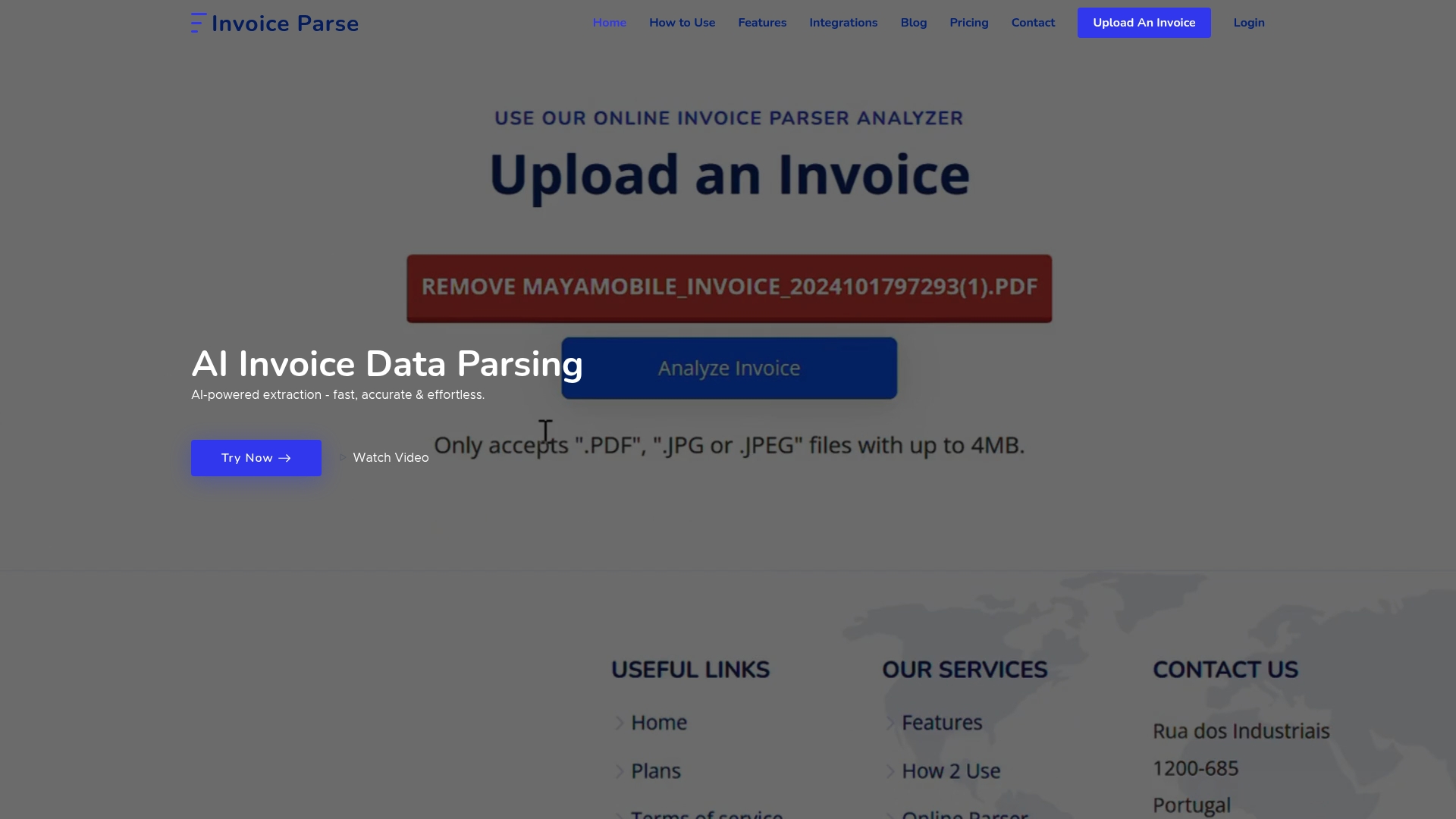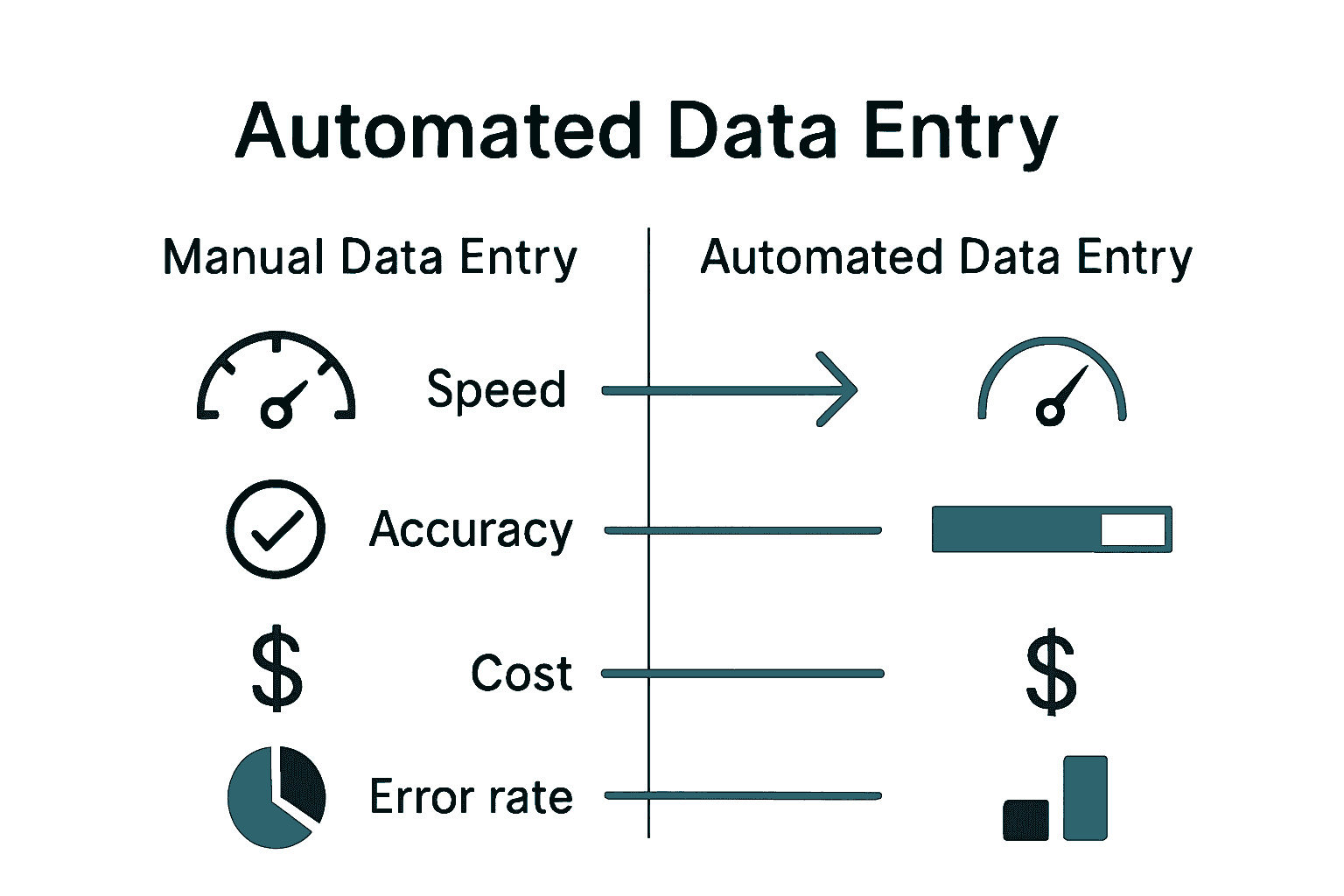Did you know that dirty data costs businesses billions every year through avoidable mistakes? Data entry errors sneak into daily operations, causing headaches from budget oversights to compliance risks. Many teams blame human error alone, but even required form fields and rigid validation rules often play a surprising role. Understanding how these issues arise, and challenging common myths, can help you protect your company from hidden inefficiencies and expensive blunders.

Complete Guide to Reducing Data Entry Errors
Key Takeaways
| Point | Details |
|---|---|
| Data Entry Errors Are Costly | Inaccurate, incomplete, or inconsistent data can lead to significant operational challenges and affect financial reporting accuracy. |
| Human and Systemic Factors Contribute to Errors | Data entry mistakes result from human factors, process flaws, and technological limitations, highlighting the need for comprehensive training and design improvements. |
| Automation Reduces Errors | Leveraging automation technologies, such as OCR and RPA, greatly minimizes human error and enhances data management efficiency. |
| Adopt Best Practices for Error Prevention | Organizations should implement automated validation tools and standardized procedures to create a culture of meticulous data management and continuous improvement. |
Table of Contents
- Data Entry Errors Defined And Common Myths
- Types Of Data Entry Errors In Finance
- Key Causes Of Data Entry Mistakes
- Role Of Automation In Minimizing Errors
- Best Practices For Error-Free Data Entry
- Comparing Manual Versus Automated Data Entry
Data Entry Errors Defined and Common Myths
In the complex world of business data management, data entry errors are silent productivity killers that can wreak havoc on organizational workflows. According to research on dirty data, these errors manifest as inaccurate, incomplete, or inconsistent records that compromise the fundamental integrity of databases. Think misspellings, wrong field associations, duplicate entries - small mistakes that create massive downstream problems.
Contrary to popular belief, not all data entry errors stem from human carelessness. A fascinating academic study highlights an unexpected insight: required form fields can paradoxically contribute to data quality issues. The research introduces LACQUER, a learning-based method demonstrating that unnecessarily strict data entry requirements often lead users to enter meaningless placeholder values, which technically “pass” validation but introduce no real informational value.
Common data entry error myths include:
- All errors are human mistakes
- More required fields ensure better data quality
- Manual double-checking always catches mistakes
The reality is more nuanced. Modern organizations need sophisticated approaches that blend technological solutions with smart design principles. Read more about manual versus automated data entry processes to understand how emerging technologies can dramatically reduce error rates and improve overall data management strategies.
Types of Data Entry Errors in Finance
In the intricate world of financial data management, data entry errors can transform from minor mistakes into significant operational challenges. According to research from Accountancy Capital, financial data entry errors span multiple complex categories that can silently erode organizational accuracy. These errors range from seemingly innocuous typographical mistakes to more systemic issues like digit transpositions and misfielding.
The most prevalent types of financial data entry errors include:
Here’s a summary of the most common financial data entry errors:
| Error Type | Example | Potential Impact |
|---|---|---|
| Typographical Mistake | Entering 1000.0 instead of 100.00 | Inaccurate reports |
| Digit Transposition | 2546 instead of 2456 | Misstated transactions |
| Misfielding | Placing amount in date column | Confused records |
| Duplicate Entry | Logging invoice twice | Overstated expenses |
| Omission Error | Skipping a required field | Incomplete financial data |
- Typographical Mistakes: Mis-typing numerical magnitudes or decimal placements
- Digit Transpositions: Accidentally swapping sequential numbers
- Misfielding: Entering data into incorrect spreadsheet or database columns
- Duplicate Entries: Inadvertently recording the same transaction multiple times
- Omission Errors: Completely skipping required financial information
According to A Team Consulting, these errors carry profound implications. They can distort financial reporting, compromise cash flow analysis, disrupt budgeting processes, and even create tax compliance risks. Learn more about maintaining data integrity in financial systems, which is crucial for preventing these potentially costly mistakes.
While manual data entry inherently carries error risks, understanding these common mistakes is the first step toward developing robust prevention strategies. Financial teams must implement comprehensive validation checks, leverage automated tools, and cultivate a culture of meticulous data management to minimize these potentially expensive errors.

Key Causes of Data Entry Mistakes
Data entry mistakes are rarely random occurrences. They emerge from a complex interplay of human, technological, and procedural factors that systematically undermine data accuracy. According to research from Outsource Philippines, these root causes can be categorized into three primary domains: human factors, process flaws, and technological limitations.
Human factors represent the most unpredictable source of errors. Workplace conditions significantly impact data entry accuracy, with key challenges including:
- Mental and physical fatigue
- Lack of comprehensive training
- Persistent distractions
- Underestimating data importance
- Inconsistent attention levels
Process and technological limitations compound these human vulnerabilities. Research from One Core Dev IT highlights that inadequate systems often contribute more to errors than individual performance. Complex form designs, inconsistent procedures, manual data transfers, and insufficient validation mechanisms create environments where mistakes become almost inevitable. Explore our insights on understanding machine learning approaches in finance to see how advanced technologies can mitigate these systemic risks.
Ultimately, reducing data entry errors requires a holistic approach. Organizations must invest in comprehensive employee training, design intuitive interfaces, implement robust validation tools, and create work environments that minimize cognitive load and maximize accuracy. The goal isn’t eliminating human involvement but creating systems that support and enhance human performance.
Role of Automation in Minimizing Errors
Automation technologies are revolutionizing data entry by systematically reducing human error and increasing operational precision. According to research from Outsource Philippines, cutting-edge technologies like Optical Character Recognition (OCR), Intelligent Character Recognition (ICR), AI/Machine Learning, and Robotic Process Automation (RPA) are transforming how organizations capture and process critical information.
The error reduction potential is profound. A compelling academic study revealed a semi-automated ‘Smart Data Extractor’ dramatically minimized mistakes in data collection. In clinical trials, manual entries produced 163 errors, while the automated tool generated just 46 errors - a staggering 72% reduction. The key automated technologies that drive this transformation include:
- OCR/ICR: Automatically converting printed or handwritten text
- Barcode/RFID Scanning: Eliminating manual data input
- Voice Recognition: Converting spoken information directly to text
- AI/Machine Learning: Continuously improving data extraction accuracy
- Robotic Process Automation: Standardizing repetitive data entry tasks
Learn more about workflow automation strategies that can help businesses implement these transformative technologies. By embracing automation, organizations can create more reliable, efficient data management systems that minimize human error and maximize operational intelligence.
Best Practices for Error-Free Data Entry
Data entry excellence requires a multifaceted approach that combines technological solutions, strategic processes, and human expertise. According to research from Insation Tech, organizations can dramatically reduce errors by implementing a comprehensive error prevention strategy that goes beyond simple manual checking.
Key best practices for minimizing data entry mistakes include:
- Automated Validation Tools: Implement real-time error checking
- Standardized Procedures: Create clear, consistent data entry protocols
- Ongoing Training: Regularly update staff skills and awareness
- Peer Review Systems: Use double-entry verification techniques
- Ergonomic Workspace Design: Reduce physical and mental fatigue
According to ILM Corporation, data governance plays a crucial role in error reduction. This involves establishing clear policies, minimizing redundant data fields, and strategically leveraging automation technologies. Explore our comprehensive automation guide to understand how selective automation can transform your data management approach. Successful organizations recognize that error prevention is not about eliminating human involvement, but creating intelligent systems that support and enhance human performance, turning potential mistakes into opportunities for continuous improvement.
Comparing Manual Versus Automated Data Entry
Data entry methodologies represent a critical decision point for organizations seeking operational efficiency. According to research from Data Entry Ninja, the landscape of data processing has dramatically transformed with the emergence of advanced automated technologies that fundamentally challenge traditional manual approaches.
Key comparative metrics reveal stark differences:
| Metric | Manual Entry | Automated Entry |
|---|---|---|
| Accuracy | 97-99% | 99.5-100% |
| Processing Speed | Slow | Extremely Fast |
| Labor Costs | High | Decreasing |
| Scalability | Limited | Highly Scalable |
| Error Rate | 1-3% | Less than 0.5% |
While manual entry offers initial flexibility, automated systems powered by OCR, Intelligent Document Processing (IDP), Natural Language Processing (NLP), and Robotic Process Automation (RPA) deliver remarkable advantages. Explore strategies for automating repetitive tasks to understand how technology can transform your data management approach. The key isn’t eliminating human involvement, but creating intelligent systems that leverage both technological precision and human insight, turning data processing from a cost center into a strategic advantage.
Put an End to Data Entry Errors with Automated Invoice Processing
If you are tired of typographical mistakes, duplicate records, or the constant risk of digit transpositions disrupting your financial operations, now is the time for change. As highlighted in this guide, manual data entry often leads to mounting frustrations and costly errors, no matter how careful your team is. Imagine eliminating these pain points with a system that delivers accurate, instant invoice data—no templates or setup required. Explore how Invoice Parse can help and discover the easiest way to protect your business from the hidden costs of dirty data.

Take control of your data workflows today. Sign up for Invoice Parse and experience trusted AI-powered extraction for every invoice you process. Ready for fewer errors and more time back in your day? See how workflow automation can work for you and give your team the confidence to focus on what really matters.
Frequently Asked Questions
What are the most common types of data entry errors?
The most common types of data entry errors include typographical mistakes, digit transpositions, misfielding, duplicate entries, and omission errors. These mistakes can lead to significant inaccuracies in data management.
How can automation help reduce data entry errors?
Automation technologies such as Optical Character Recognition (OCR), AI/Machine Learning, and Robotic Process Automation (RPA) can significantly reduce data entry errors by minimizing human involvement and streamlining data capture processes.
What best practices should be implemented to minimize data entry mistakes?
To minimize data entry mistakes, organizations should implement automated validation tools, establish standardized procedures, provide ongoing training to staff, use peer review systems, and create an ergonomic workspace design to reduce fatigue.
How do manual and automated data entry compare in terms of accuracy and efficiency?
Manual data entry typically achieves an accuracy rate of 97-99%, whereas automated data entry can reach accuracy levels of 99.5-100%.
 Automated systems are also significantly faster and more scalable, which makes them more efficient overall.
Automated systems are also significantly faster and more scalable, which makes them more efficient overall.
Recommended
- AI Invoice Parse – Understanding Manual vs Automated Data Entry Processes
- AI Invoice Parse – Understanding Maintaining Data Integrity for Businesses
- AI Invoice Parse – Automating Repetitive Tasks: Boost Efficiency and Cut Costs
- AI Invoice Parse – How to Prevent Duplicate Payments in 2025: A Step-by-Step Guide
